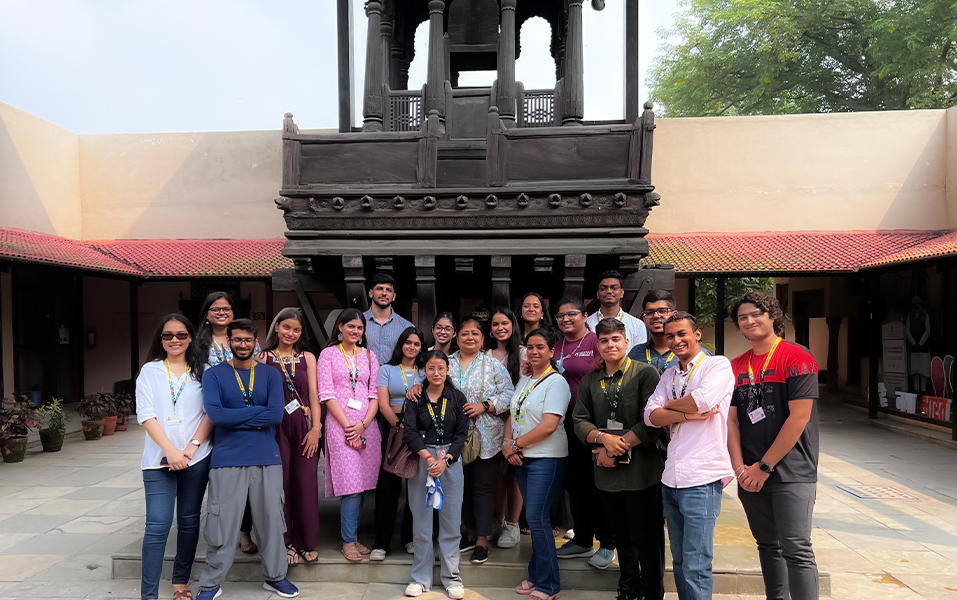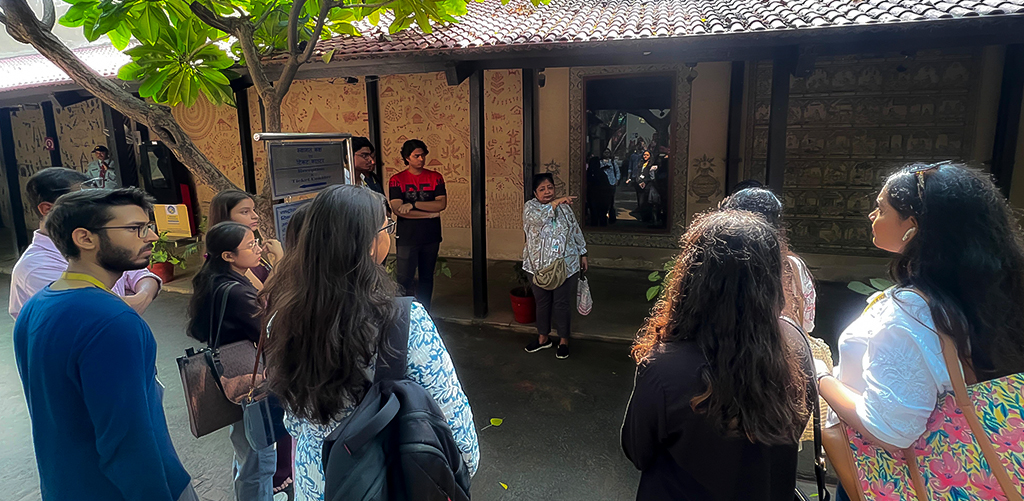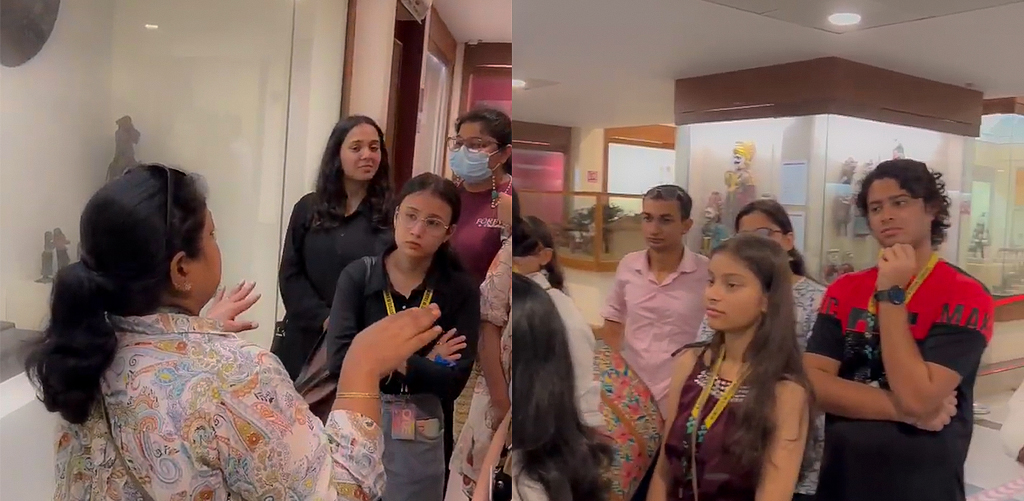

In the heart of New Delhi lies a hidden gem that captures the essence of India’s rich artistic legacy – the National Handicrafts and Handlooms Museum, popularly known as the National Crafts Museum. Recently, aspiring Interior Designers from JD Institute of Fashion Technology had the privilege of exploring this cultural treasure trove, gaining invaluable insights that will shape their future careers.
For our Jediiians, this visit was not just a walk through the corridors of history, but a gateway to a treasure trove of inspiration. The museum, governed by the Ministry of Textiles, serves as a vibrant reminder of India’s regional diversity, offering a panoramic view of the country’s artistic legacy through the prism of traditional handicrafts and handlooms.
The museum presents a comprehensive array of craft styles that encompass the entirety of India, from the exquisite textiles of Gujarat to the ornate needlework of Kashmir. While the students examined various sections of the museum, they discovered ancient traditions and craftsmanship techniques that persist. Each display offered insight into the laborious processes involved in ceramics, wood carving, and textile weaving.

The students were especially captivated by the exquisite exhibits of traditional Indian craftsmanship. From exquisitely crafted clay vessels to intricately woven fabrics, each item exemplified the commitment and meticulousness of artisans whose expertise has been refined over decades. The varied skills exhibited enabled the students to understand the unique attributes of each region’s art form, uncovering a cultural richness unattainable by contemporary mass-produced creations.
A primary insight from the visit was the harmonious blend of traditional crafts into contemporary design environments. The students examined the potential for incorporating historical components into modern designs, resulting in spaces that are visually striking and culturally grounded. The colours, patterns, and textures exhibited in the museum served as catalysts for the students’ creativity, prompting them to transcend the conventional and incorporate elements from India’s abundant artisanal heritage into their work.

The observations of these traditional art forms highlighted the adaptability of Indian handicraft. The students discovered that these crafts may enhance modern dwellings with aesthetic value while also fostering a profound connection to cultural identity. Whether it is a meticulously handwoven textile serving as a focal point in a living area or elaborately sculpted wooden furnishings, these artisanal methods can enhance the allure of modern environments while paying homage to heritage.
Although textbooks and classes impart theoretical information, they cannot approach the experiential learning gained from practical exposure. The museum visit provided our Interior Design students with a distinctive opportunity to depart from traditional classroom environments and engage with India’s cultural heritage. They engaged with artisans, observed live demonstrations of ancient craft skills, and had a greater understanding for the labour and passion necessary to create these artworks.
A key lesson gained was the significance of patience and skill in design. Every exhibit at the museum exemplifies the time and expertise dedicated by craftspeople, highlighting the diligence frequently lacking in the contemporary, rapid-paced, technology-orientated environment. This encounter expanded the students’ understanding of craftsmanship, emphasising the importance of process over product. It provided them with practical insights on how to integrate such comprehensive procedures into their future design efforts.
The tour highlighted the important role traditional crafts play in eco-friendly design. Natural materials and eco-friendly procedures are prominent in many of the museum’s crafts, which teaches us something significant about sustainability in today’s design world. Leaving the museum, the students were even more determined to find ways to incorporate these eco-friendly, time-honoured methods into contemporary interior design projects in a way that pays homage to the past while also making a positive impact on the environment.
The visit to the National Crafts Museum had a profound impact on JD Institute students. The experience expanded their creative perspectives and enhanced their admiration for India’s artistic heritage. Through comprehensive engagement with traditional crafts, the students are now better prepared to incorporate a distinctive fusion of cultural authenticity and contemporary elegance into their future design projects.
JD Institute of Fashion Technology prioritises experiential learning, promoting creativity and innovation by linking students to the abundant cultural resources at their disposal. Through such experiences, the institute ensures its students are proficient in modern Interior Design trends and rooted in India’s artistic legacy.